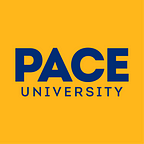Remote Tutoring in COVID-19 Times
Practitioners and researchers in education are charged with the important task of identifying effective recovery practices that include providing students and families with the appropriate resources and supports during this pandemic.
By Shobana Musti, PhD
Associate Professor, School of Education
We recently passed the six-month mark since the Coronavirus COVID-19 lockdown in March when K–12 schools made the abrupt switch to remote instruction. Although administrators and teachers responded to the call with urgency, the summer months have given us time to plan and prepare for a fall reopening.
As I teach my fall course entitled, Literacy Instruction for Students with Special Needs, I can’t help but be struck by the magnitude of effect that COVID-19 has had on the most vulnerable of our school-aged population — students considered at risk for school failure who come from diverse ethnic, racial, and linguistic backgrounds including low-income households. Included in this group are students with disabilities receiving special education and related services such as occupational therapy and speech therapy. Although it is too early to measure the true impact of the remote learning on students’ academic learning, preliminary indications based on seasonal loss research indicate that students will re-enter school in fall 2020 behind a full grade level. The academic losses brought about by the prolonged disruption of learning is referred to as the COVID-19 Slide (NWEA, 2020).
Practitioners and researchers in education are charged with the important task of identifying effective recovery practices that include providing students and families with the appropriate resources and supports during this pandemic. With the K–12 population opting between remote instruction and in-person instruction, questions that remain to be answered include: How do we provide students at-risk with the explicit, systematic, and intensive instruction that they need to perform at grade level? Who will deliver the supplemental instruction at the small-group or individual level?
Some of the answers to these questions can be found in strong school-university partnerships. Fortunately, the Pace’s School of Education (SOE) has been able to leverage partnerships with neighboring school districts to provide remote tutoring services for families. In the Spring semester, 90 of Pace’s teachers in training conducting remote tutoring to K–12 students in a local school district. What would further enhance this initiative is training Pace students and community volunteers to implement evidence-based interventions via remote tutoring and in turn provide the systematic and intensive instruction that many at-risk students need to perform at grade level.
From a social justice standpoint, such a model seems like a win-win-win situation in which the university students gain meaningful and supervised field-based experience, school districts have additional personnel to deliver the instruction, and the K–12 students receive the much-needed supplemental instruction. This will require a lot of work and coordination on the part of the technology departments in school districts who are already overburdened and the university personnel trying to serve as liaison between the school district and the teachers in training. But it’s a doable endeavor, and we in the SOE have embarked on this important undertaking.
Although the current moment remains considerably volatile, perhaps such a model can provide some much-needed educational stability as we cautiously navigate this new normal.
